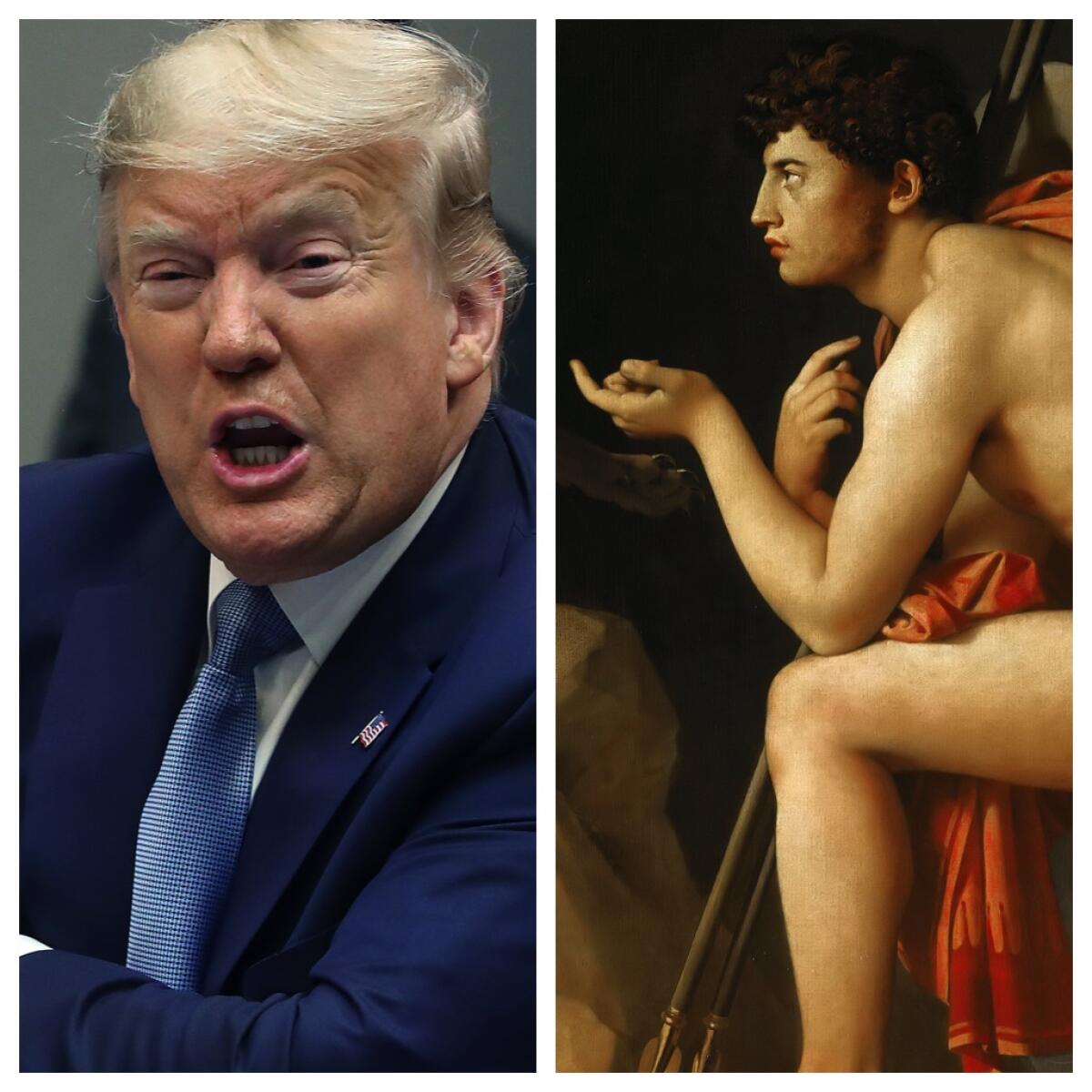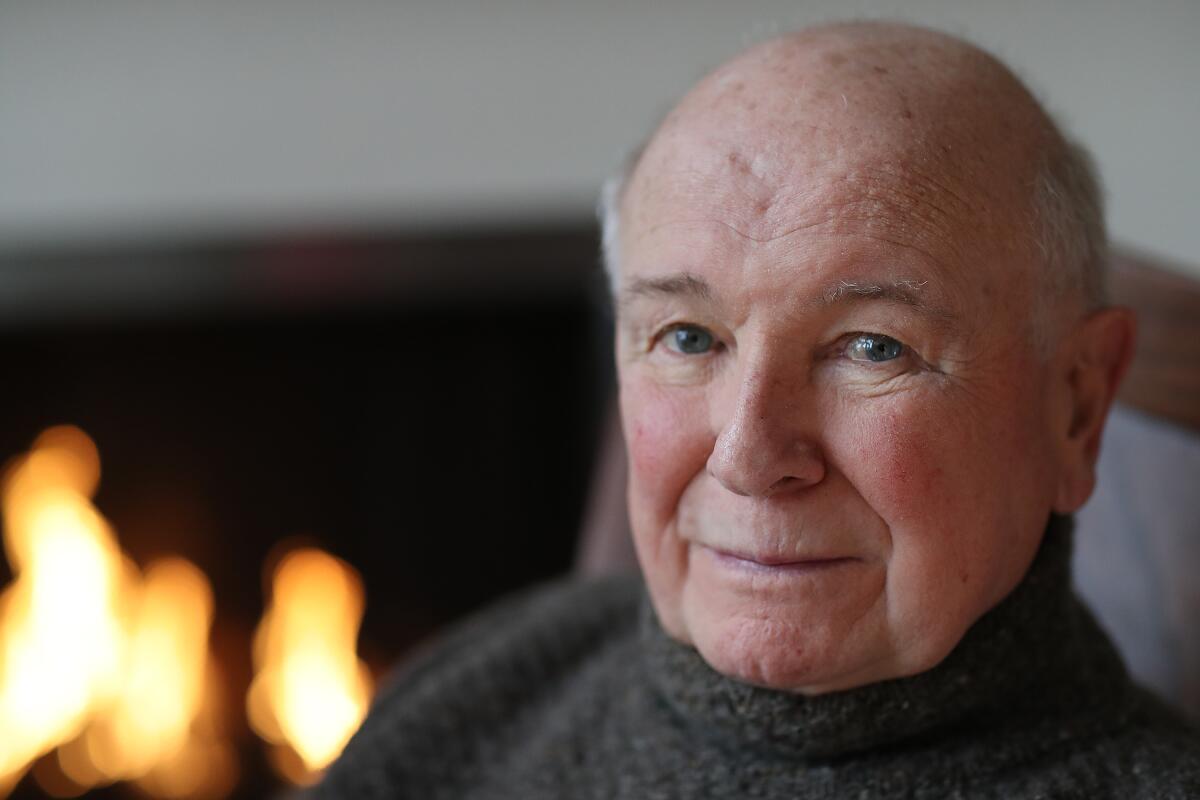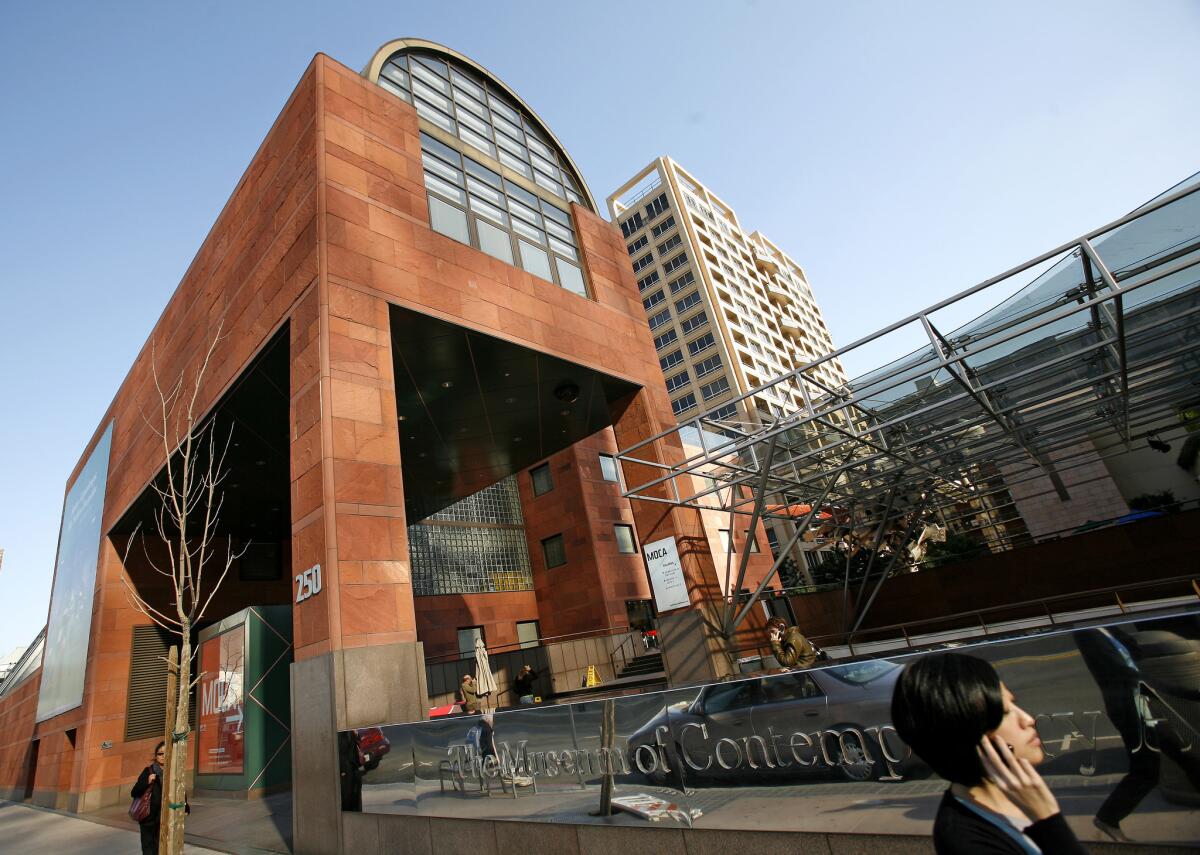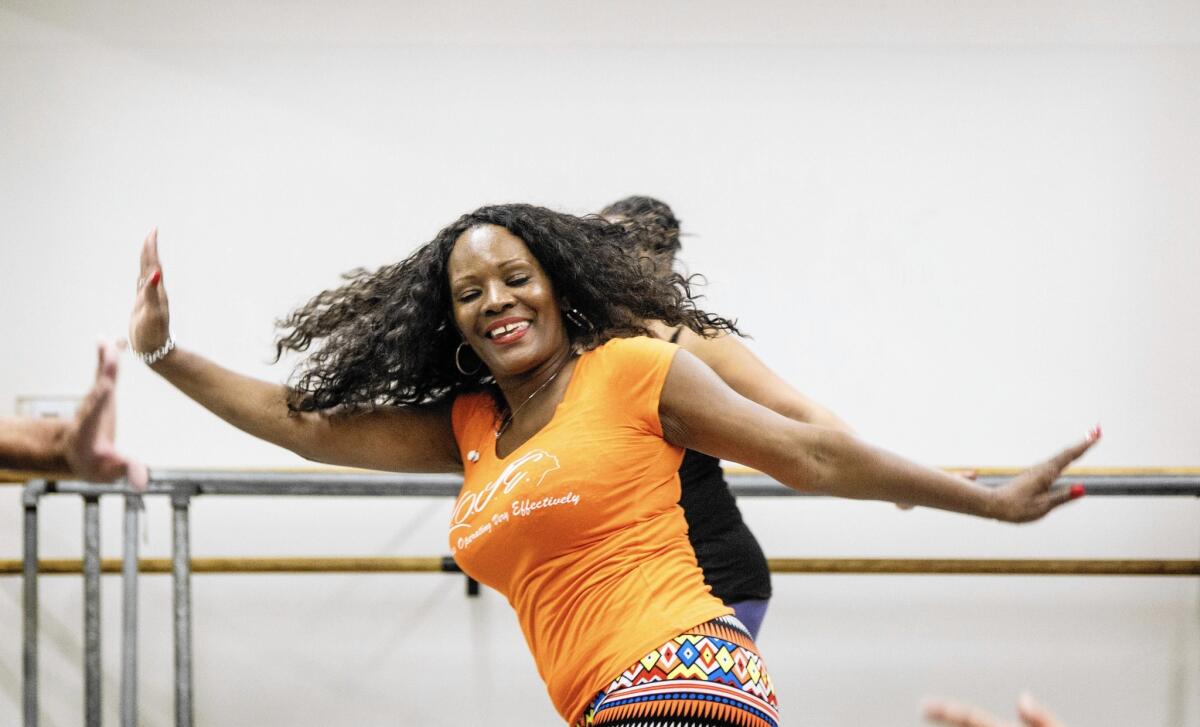Essential Arts: Trump and Oedipus Rex, lessons from times of plague
- Share via
Greetings from the quarantine! I’m Carolina A. Miranda, staff writer for the Los Angeles Times, with all things arts and culture and coronavirus — as well as an incredibly well-dressed chihuahua.
Essential image
Countless galleries were scheduled to open shows on the week that L.A. began to go into lockdown. That doesn’t mean you can’t see what they were planning to show. Many spaces have responded by creating online programming. Until they reopen, I’ll be kicking off each newsletter with a work from one of these shows ...
... starting with comic artist Aline Kominsky Crumb’s solo exhibition at Kayne Griffin Corcoran. “Goldie in Fanatic Female Frustration,” above, was created in 1975, and features one of the artist’s alter egos. It was part of a wave of taboo-shattering comics from the ’70s that employed elements of autobiography to satirize the culture and explore female sexuality. See the entire show digitally in the gallery’s online viewing room.
Oedipus wrecks
Times theater critic Charles McNulty has been watching President Trump’s daily briefings and is “struck by the parallel between our president and that quintessential Sophoclean sufferer, Oedipus.” That’s not to imply Trump has a mom thing; instead McNulty explores the lesser known political situations Oedipus faces as a leader in an era in which a plague is killing crops — in particular, his relationship to absolute power, “an ever-present danger when a ruler convinces himself that his authority is unimpeachable.”

A life of love and valor
Playwright, musical librettist and screenwriter Terrence McNally, the pen behind stage works such as “Kiss of the Spider Woman” and “Love! Valour! Compassion!,” died at 81 from complications related to the novel coronavirus. “While most playwrights since World War II have arrived like comets, creating their signature scripts early in their careers,” wrote The Times’ Mike Boehm in this paper’s obit, “the arc of McNally’s writing life testified to the riches — especially insight, empathy and a hesitance to judge flawed people too harshly — that came with maturity.” (Boehm is one we also lost all too early: he died in 2019.)
“Mr. McNally introduced Broadway and Off Broadway audiences to characters and situations that most mainstream theater had previously shunted into comic asides,” wrote Jesse Green and Neil Genzlinger in their obituary in the New York Times. McNally’s first Broadway production, in 1965, featured “an almost unheard-of romance between two men.”
Make the most of L.A.
Get our guide to events and happenings in the SoCal arts scene. In your inbox every Monday and Friday morning.
You may occasionally receive promotional content from the Los Angeles Times.
Charles McNulty paid tribute in an appreciation: “A leading gay playwright who embraced his communal role yet adamantly resisted ghettoization, he taught compassion and acceptance by reminding audiences that gays and straights want the same things — to love and to be loved, to find purpose (if not meaning) in the swirling mystery and to be forgiven while learning (grudgingly) to forgive.”
And reporter Ashley Lee chatted with lyricist Lynn Ahrens and composer Stephen Flaherty about what made McNally such a great collaborator on the musical “Ragtime” (and how he liked really large type). “He was so poetic and lyrical,” says Ahrens, “and really had a way of inspiring songs in his musical collaborators.”
Lee also spoke with a teary Matthew Lopez, the playwright behind “The Inheritance” and the “Legend of Georgia McBride,” about the importance of McNally’s work to his own development as a person and a writer. “More than any other playwright of his generation, he had the ability to look honestly at the world and not ignore its flaws but to actually see the beauty in the flaws.”

The theater world turned out to honor McNally on social media. Lin-Manuel Miranda described himself as “heartbroken,” and Chita Rivera wrote, “A huge part of me is gone.” Lee rounds up the reactions.
Coronavirus hits the arts economy
It’s been a grim week for arts workers. In Los Angeles, MOCA has laid off its 97 part-time employees and the Hammer Museum has laid off 150 student workers. The Times’ Deborah Vankin has been digging into the story. Thus far, LACMA is still planning on paying its hourly and part-time staff during the closure period, and the Broad museum plans to pay employees through at least April 8. “I think it’s something no museum can, in good conscience, avoid thinking about right now,” says Selma Holo, director of USC’s Fisher Museum. “Museums, depending on how reliable their funding is, have to address it.”

The traveling production of the acclaimed revival of “Once on This Island” has canceled its run, making it the first Broadway national tour to close prematurely. And New York City Ballet has also canceled its season, but will pay its employees, and the New York Philharmonic is furloughing musicians. In addition, the Tony Awards have been postponed indefinitely and the Ojai Music Festival has canceled its season for the first time in 74 years.
In the Bay Area, the San Francisco Art Institute will not be accepting new students for the fall 2020 semester. In a letter sent to faculty, staff, students and trustees, the school’s president, Gordon Knox, said that the school’s already precarious financial situation has been exacerbated by the pandemic: “We are now considering the suspension of our regular courses and degree programs starting immediately after graduation.”
At the time the school had been in negotiations to merge with a larger Bay Area institution, reports Sarah Hotchkiss of KQED, but talks stalled when coronavirus hit.
San Francisco Chronicle art critic Charles Desmarais reports on a COVID-19 impact survey organized by the San Francisco Arts Alliance. The study estimates that area arts organization could lose about $73 million in revenue and donations if the shutdown continues through the summer.
Enjoying this newsletter? Consider subscribing to the Los Angeles Times
Your support helps us deliver the news that matters most. Become a subscriber.
All of this makes a tweet by former U.N. Ambassador Nikki Haley sting quite a bit. The stimulus bill allots funding to the Kennedy Center, the National Endowment for the Arts and the National Endowment for the Humanities, among other cultural groups. “How many more people could have been helped with this money?” she asked. Charles McNulty writes that it’s small potatoes given everything else that’s going into the bill — “the equivalent of a waitress at a diner being left a penny after working a 14-hour shift.”
As always, you can find a complete guide to The Times’ coronavirus coverage at latimes.com/coronavirus.
Fresh air in the age of ‘rona
The Times’ Daniel Hernandez has an essay on why the lockdown of public spaces is aggravating the emotional impact of the epidemic. “One of the last remaining channels of social cohesion and mental well-being that we have left as societies fight the global pandemic is access to public lands, and the public right-of-way,” he writes. Don’t miss the incredible images in this piece by staff photographers Carolyn Cole, Luis Sinco, Robert Gauthier and Jay L. Clendenin.

Urbanism writer Alissa Walker looks at the distribution of that outdoor space. Experts are recommending everyone stay in their own neighborhoods, but not all neighborhoods are created equal when it comes to public space: nationwide, 100 million people do not have a park within a 10-minute walk of their home. “We need to stop shaming people who are going for walks in the park to rightfully get some air after a tough week,” says architect and urbanist Jonathan Fertig. “And start shaming politicians who aren’t closing down streets to cars.”
Learning from a codex
In 1576, as colonial Mexico was being ravaged by a smallpox pandemic, a Franciscan monk and a group of indigenous scribes sealed themselves off in a convent and put the finishing touches on a vital record of indigenous life. The Florentine Codex, as that book is known, is an encyclopedic look at Nahua life in the Valley of Mexico before the arrival of the Spanish. Its creators were unable to use color in its final chapters because they ran out of pigment — and couldn’t secure anymore while in quarantine. But they nonetheless created an incredible historical document, a richly layered work of art and an object that speaks to survival and resilience. I look at what we can learn from the Codex at this moment in time.
Passages
Maurice Berger, an accomplished writer and curator whose prescient work on art and race helped set a framework for the social discourses of today, died last weekend of complications from COVID-19 at the age of 63. “He was just a tireless advocate for talking about race in the art world,” said UCLA art historian Steven Nelson.
Michael Sorkin, an architect, critic and educator whose writings often examined the political nature of architecture and the inequities of urban space, has died at 71 — also from complications related to COVID-19.
Here is his tongue-in-cheek design, from 1997, showing a series of glove-shaped towers at Dodger Stadium.
Best arts online
The Times’ Matt Cooper has been hitting the keys to deliver daily digests of the best culture events online — including a free stream of Hugh Jackman starring in a revival of “Oklahoma” at the National Theatre of London in 1998, a performance of the Pacific Opera Project’s “Madama Butterfly,” and a whole archive of concerts previously held at the Natural History Museums of Los Angeles County.
Find Cooper’s daily dispatches at this link. Plus, find broader listings on The Times’ “Things to Do” site, which features everything to do with kids, with food, with video games, with your garden, with ... you get the idea.
Jori Finkel has 10 binge-worthy art podcasts. And if you want culture you can groove to, you’re in luck because The Times’ Makeda Easter rounds up the best online dance classes, from Bollywood to ballet.

In the news
— As all those talking heads are doing cable news appearances from home, design writer Kathleen A. Hughes is having a looking at their interior design.
— The Rams have a new logo — and it looks like a logo for a morning show.
— Legendary movement artist Yvonne Rainer has created a choreography that you can do in your home.
— A Russian theater is going to stage performances for one spectator at a time.
— Some good news: Nine arts writers have been named the winners of the 2020 Rabkin Award, including Seph Rodney of New York and Sam Lefebvre of San Francisco.
— Paddy Johnson looks at how the move to online sales platforms may hurt small galleries.
— The L.A. County Department of Arts and Culture has rounded up resources available to culture workers affected by the pandemic.
— The Art Newspaper also has a list of resources.
— Even better, performance artist Guillermo Gómez Peña has devised a guide to surviving the apocalypse.
And last but not least ...
An Instagram account of an influencer chihuahua in Japan that wears hand-made clothes. Bless you, @montjiro.
The biggest entertainment stories
Get our big stories about Hollywood, film, television, music, arts, culture and more right in your inbox as soon as they publish.
You may occasionally receive promotional content from the Los Angeles Times.




